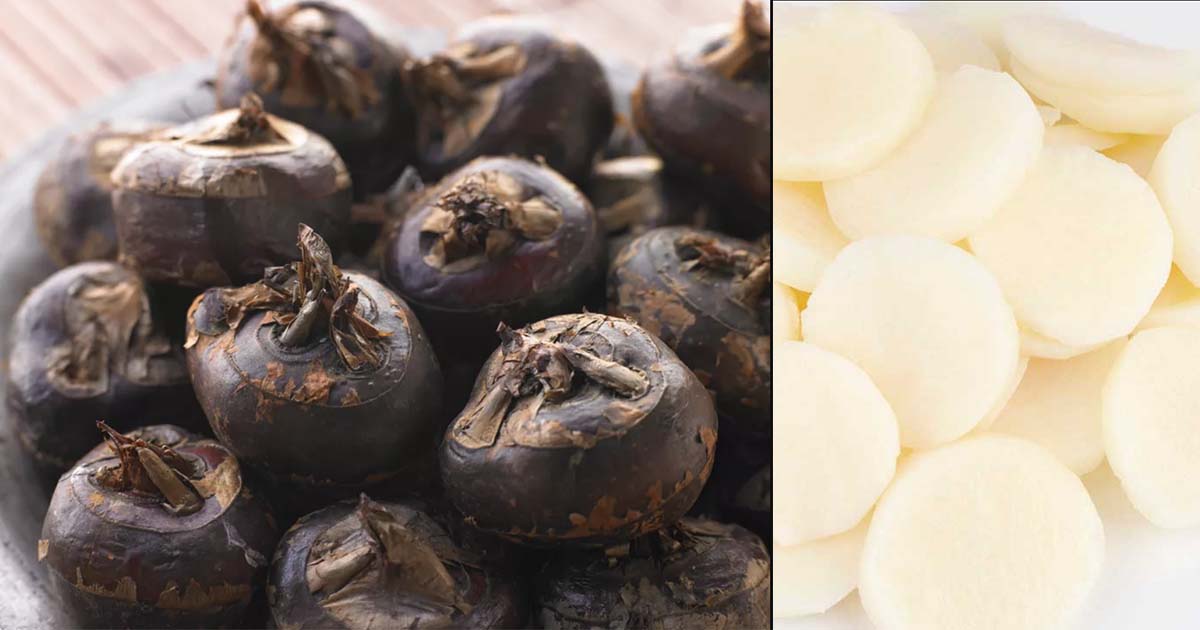Despite their deceptive name, water chestnuts are not nuts at all. They are aquatic tuber vegetables that grow in marshes, ponds, paddy fields and shallow lakes.
They grow in parts of Southeast Asia, Africa, Australia, and many Pacific islands. A water chestnut resembles an actual chestnut in both color and shape, but it is not a nut. Water chestnuts are popular in many cuisines and have a variety of potential health benefits.
These benefits may include:
Providing antioxidants
Water chestnuts are an excellent source of antioxidants. Antioxidants help the body’s immune system fight free radicals, which are potentially harmful molecules.
When free radicals accumulate to a certain extent, they can cause a state of oxidative stress, impacting the body’s natural defenses and damaging cells. Oxidative stress is linked to an increased risk of developing chronic illnesses, including cancer.
However, some research suggests that the antioxidants found in water chestnut peel can help neutralize the effects of free radicals on the body.
Read more: Household Treasures: Grapefruit, benefits and risks
Slowing tumor growth
Water chestnuts contain an antioxidant called ferulic acid. There is some evidence that ferulic acid can help reduce or slow the growth of cancer cells. For example, a test tube study of breast cancer found that ferulic acid both helped kill and reduce the growth rate of the cells.
However, determining whether the compounds in water chestnuts can help fight cancer will require more research in humans.
Top of Form
Bottom of Form
Lowering calorie consumption
Water chestnuts are very low in calories. Half a cup of sliced water chestnuts contains just 60 calories. Despite having a low-calorie count, water chestnuts contain many nutrients, including:
Lowering high blood pressure and associated risks
High blood pressure can contribute to several health issues, including stroke and heart disease. Potassium, a nutrient in water chestnuts, is linked to reducing blood pressure. A 2013 review found that increasing the intake of potassium could help reduce blood pressure in people with hypertension.
The researchers also found moderate-quality evidence to suggest that a higher potassium intake could reduce the risk of stroke by 24 percent. This review considered a higher intake to consist of 3,500–4,700 milligrams (mg).
Another, smaller review of 11 studies found that higher potassium intake reduced both the risks of stroke and heart disease. Half a cup of sliced water chestnuts contains 362 mg of potassium. Adding extra potassium to a healthful diet may help lower high blood pressure and its associated risks.
Read more: Household Treasures: Pineapples, benefits and uses
How to use water chestnuts
Water chestnuts are easy to prepare and eat. The traditional Pakistani way is to boil them and enjoy them peeled.
However, they can also be fried, grilled, boiled, or sautéed to provide a sweet, crunchy addition to a meal. Depending on the dish, a person may serve them whole, sliced, diced, or ground up. They are popular in stir-fries, chop suey, and many curries.
People also enjoy candied or pickled water chestnuts as a snack. Or, to them in a flour mixture or as a thickening agent, dry water chestnuts out and grind them up.













